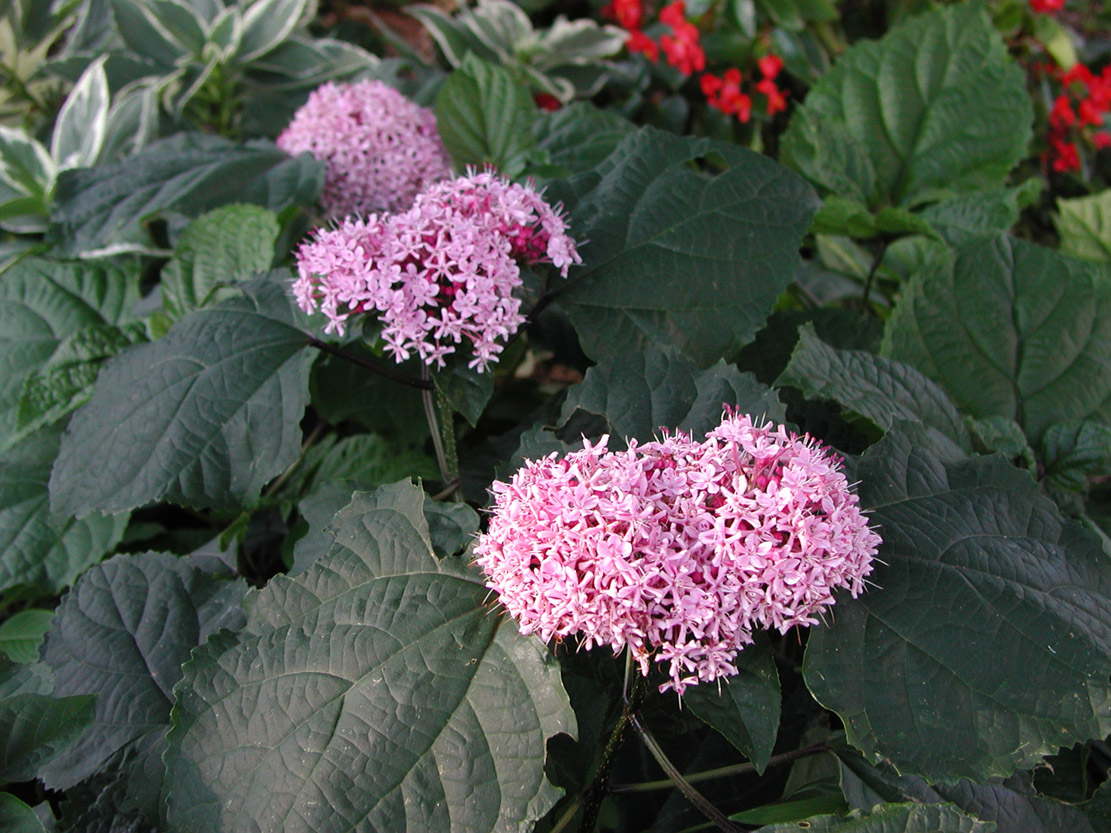Resource Library
Plant of the Week: Clerodendrum bungee; Pink Glorybower
I’ve never lived in a tropical climate, so the plants I know are of a temperate nature. Those of us living in temperate regions suffer from a bit of locational snobbery; a feeling that the middle latitudes between 35 and 50 degrees north and south are inherently better than the too hot tropics or the too cold tundra. Nature doesn’t agree though, for the tropics teem with life, with a richness of species many times greater than what we encounter in our colder climes. Pink Glorybower (Clerodendrum bungei) is a tropical plant at heart, but it survives in milder temperate gardens where it is occasionally seen in bloom in the fall.
Pink Glorybower, or as sometimes called Mexican (or French) hydrangea, is one of about 400 species of Clerodendrums found mostly in tropical regions of Asia and Africa. The Clerodendrums are a diverse group of climbing vines, tropical shrubs and small trees. Pink glorybower is a shrub in nature and found throughout much of China, though probably spread by humans. Now Clerodendrums are viewed as belonging to the mint family after having been considered as being in the verbena family for over 150 years.
In frost free regions pink glorybower is a low-branched shrub that can reach 8 feet in height, but in temperate regions, it usually freezes back to the ground each winter and behaves more as an herbaceous perennial, seldom reaching more than five feet in height by the end of the growing season. The common names that call it a “hydrangea” are fitting for plants growing in temperate zones do have a hydrangea-like look to them. Not really accustomed to cold, its leaves go from green to black with the first frost.
The thin, heart-shaped leaves are as large as your hand and foul smelling when crushed. The fragrant, pink, flat-topped flower heads appear at the ends of branches in late summer and fall and can be four to six inches across. Flowers are closely packed in the inflorescence with a narrow, inch-long tube that ends with five narrow petals. The calyx has five, star shaped lobes and supports a black, pea-sized berry if pollination occurs.
A second, slightly more hardy species, Clerodendrum trichotomum - the Harlequin glorybower, has white flowers and grows into a head high bush. It is sold in the nursery trade in the southeastern states while C. bungei is a pass-along plant shared amongst gardeners. Mike Dirr, the famous Georgia plantsman with his acerbic wit, says harlequin glorybower is the more ornamental of the two but that – except when in flower – it is about as attractive as a turned over trash dumpster. Faint praise indeed.
All of the shrubby Clerodendrums, including a couple more that are hardy in south Florida, spread by means of an expanding network of underground rhizomes. The rose glorybower is listed as an escaped weed in Texas, Georgia and Florida where it has escaped cultivation by these underground roots rather than seed. Spread of rhizomatous plants – think sumac for example – can be controlled by planting the plant in an open lawn and then keeping the area around the planting mowed.
Rose glorybower is hardy north to zone 7b (central Arkansas) while harlequin glorybower is hardy throughout the state. Both species will periodically freeze back to the ground in a cold winter, so the likelihood of either escaping cultivation is fairly remote.
For more information about horticulture or to see other Plant of the Week columns, visit Extension’s Website, www.uaex.uada.edu, or contact your county extension agent. The Cooperative Extension Service is part of the U of A Division of Agriculture.
